It is possible that we still have it with our suppliers but the price could be different from before.
Feel free to order. We will verify availability and inform you promptly.

Safe Payment
We accept Paypal, Money Transfer, Bank Transfer
Confidence
Protection covers your purchase and personal data.
Worldwide Delivery
We ship Worldwide, except Russia.Shipping cost US$25.2 for upto 0.5 kgs

Hotline
Talk to help line for your question on 9841267335This Copper Ratna Mandala Offering [full Silver Plated], [real Stone], With [filgure] is made by the hammering process. a masterpiece of Nepali artistry and craftsmanship. Created through the meticulous process of hammering and folding copper sheets, this extraordinary object showcases the unparalleled skill of Nepali craftspersons. Nepal, known for its rich artistic heritage, is home to highly skilled artisans who have perfected the art of metalwork. With great precision and expertise, these craftspersons combine traditional techniques with their creative flair to produce objects of exceptional beauty and spiritual significance. Read More . . .
The Tibetan term for mandala is khyil-khor, which means "taking the essence." The essence you take is the whole path from guru devotion to enlightenment. That's what you get from doing this practice, plus the result: the unification of dharmakaya and rupakaya. Therefore by doing this practice you receive inconceivable temporal and ultimate happiness.
| | | |
This practice pacifies all hindrances to your temporal and ultimate happiness. These depend on merit and merit depends on offerings. The most meritorious object to offer is the mandala. Therefore if you wish to achieve temporal and ultimate happiness, the best thing you can do is to offer many mandalas.
Lama Tsongkhapa offered a million eight hundred thousand mandalas and achieved all the realizations of the stages and paths. If you wish to gain realizations you should offer mandalas to your guru every day as his jewel-like body can bestow the sphere of great bliss in an instant. All realizations depend on your guru. Offering mandalas to him/her is like offering gifts to a king before requesting a favor of him. Achieving enlightenment in one lifetime depends on your relationship with your guru.
Lama Tsongkhapa was instructed by Manjushri to leave the monastery and go to a hermitage where he was to concentrate on bodhicitta, seeing his guru as Buddha, meditate on the path, purify and accumulate merit. Without working on all of these, even if you practice for a hundred years you won't gain realizations. However, if you do, you will receive realizations within three years or even in a few months. The mere wish to make progress doesn't make it happen. It's necessary to create the causes, one of which is accumulating merit.
Even if you're a beggar, by making mandala offerings you will receive all the necessities for your practice in this and future lives. By visualizing and then offering whatever you need in the space above the mandala, you create the cause to receive it. Visualizing anything golden and offering it to the buddhas frees you from disease, and offering the moon creates the cause for you to be reborn as a god or a holy being. Offering jewels, gold and enjoyments create the cause to be reborn in the caste of kings.
If you don't have good materials you can even use a stone for the mandala base (but first you should ask permission of the spirit landlord, otherwise it's like stealing). Lama Tsongkhapa's forearm was blue and bloody with scabs and calluses from making mandala offerings on a stone during his eight-year retreat. This doesn't mean that lamas don't have money to buy gold and silver bases. Lama Tsongkhapa did this to emphasize the importance of pure morality. If you are abiding in pure moral conduct you aren't allowed to touch precious metals with attachment. However, the more valuable the material you offer, the more merit you receive. The best is a gold or silver base, then copper or brass. The finest things to offer are piles of gold, silver, or jewels; the cnext best is seashells; rice or other grains are acceptable. As mandala offerings are of great consequence, you should offer the finest materials you can afford. If you have enough money to provide yourself with the comforts of life but you use inferior materials for offering, the only result of your offering will be a decrease of merit.
By visualizing the offerings as more precious and extensive, you create vast merits. For example, imagine that you're offering an Mt. Meru of silver, lapis lazuli, ruby, and gold, even if there are no such materials on your base, you receive the merit of actually offering them. So in just a few seconds, it's possible to create the merit of having offered the entire universe. When you offer water bowls it's good to visualize the water as nectar. The water appears as nectar to the devas, so of course, it appears as nectar to the buddhasâthis is explained in Maha-Uttara Yoga Tantra. It generates infinite bliss in the holy mind. So if you offer only water, you get the merit of offering water, but if it's offered as nectar you gain much more merit because of the superior quality of that offering.
Once when Guru Shakyamuni Buddha was going out for alms he passed three boys playing in the sand. One boy wanted to offer a handful of sand to the Buddha, but was not able to reach the Buddha's alms bowl, so he stood on the shoulders of the other two boys. He visualized that he was offering gold to the Buddha, and so he created the merit of having actually offered gold. By that karma, the boy was born as King Ashoka in a later life and was able to build ten million stupas in one day. He was able to offer lots of service to the Sangha because he had such great wealth and power.
Through this story you can see how karma is expandable and how to practice Dharma. Even if you're penniless you can create extensive merit. Being born as King Ashoka, experiencing good results in that life and in future lives, all came from visualizing sand as gold. So even by doing small actions, creating small virtues, things that are easy to do, it's possible to create unbelievable results of happiness and perfections. So all the time you should practice creating even small merits or good karma. If you're skillful like the boy in the story, so much merit can be accomplished. But it's difficult if your practice is unskillful.
The karma stories in the lam-rim are quite unbelievable, like people having strange bodies with horns or tails, or the arhat Tse-yi who had gold pouring unceasingly from his hand. This was the result of his having put a piece of gold in the vase of Buddha Kashyapa in his past life. Shakyamuni Buddha could explain the precise cause of each occurrence. For example, he could tell the causes of new diseases that appear in the world.
The lam-rim teachings on karma show us that we shouldn't ignore even small karmas, because such incredible results can come, things we can't even imagine. This is the experience of people in the past. We're not able to remember our experiences through our own mental power, but if there is happiness, it came from virtue. If a person continually makes offerings of water bowls and mandalas, after a few years that person will have better materials to offer. The result is experienced in this life because any merit accumulated with the guru-buddha is very powerful. The same is true for good karma created with a bodhisattva or parents: the result will be experienced in this life.
So if you remember this story you'll have faith. Even by offering one tiny grain to the Buddha creates so much merit, because karma is expandable. But if we don't visualize as explained in the prayer, then it's just offering grain, or maybe offering nothing! You'd just be playing with grains!
The sutras and tantras can be related to for reference. Accumulating merit by offering the mandala and other offerings to the Buddha is the completely reliable method to create causes of happiness, perfections and wealth. Sometimes when money is invested with the expectation of making millions of dollars profit, lots of money may be lost instead. Material values are always going up and down in the world, so you can't always be sure of making a profit. But the results of creating merit with the Buddha don't fluctuate. The results will always be sure, provided the merit is dedicated and isn't destroyed by anger.
For example, there are eight benefits of folding your hands to the Buddha, even if it is not done with a virtuous motive or even if it's done with anger. The eight benefits are:
1. Having a healthy, attractive body
2. Having pleasant surroundings, servants, etc
3. Being able to keep pure moral conduct
4. Having devotion
5. Having the courage to fight delusions and work for others
6. Rebirth as a human or a god
7. Attaining the Arya paths
8. Attaining enlightenment
There are also specific benefits of making prostrations. For example, for each atom of ground covered by the body during prostrations, we create the merit to be born a chakravartin king a thousand times. These kings are usually bodhisattvas. His Holiness the Dalai Lama is the copper chakravartin king. They have great power to guide sentient beings (one needs power and wealth to be able to guide beings).
So the result of Dharma practice is always there if it has been dedicated. It's just a matter of time when the result will be experienced. If there are no interferences, it will be experienced soon. It's completely reliable; there's no betrayal regarding the result.
Generating lam-rim realizations in the mind quickly depends on creating extensive merit. However much merit can be created in one day, in one hour makes it that much quicker to attain realizations of the lam-rim. Creating merit depends on how clearly and extensively you can visualize. That is the key; that is the essential thing about mandala offerings. In the Lam-rim Chen-mo, Lama Tsongkhapa did not explain mandalas in detail, but he explained the importance of offering the mandala with a clear visualization. This is incredibly important advice. If the visualization is not clear, less merit is created. That's the secret of mandalas; the amount of merit created depends on clearly visualizing the worlds, etc., as explained in the prayer.
The number of mandalas that are done isn't so important. The goal is lam-rim realizations, and quick realization depends on clear visualization. You would create more merit by doing ten mandalas with clear visualization than a hundred vaguely visualized. The prayer can be said quickly, but it wouldn't have so much meaning if done in that way.
It's not enough to have mere intellectual knowledge of the pathâthat doesn't change the mind. If there are seeds, but no soil, water, fertilizer and warmth they won't grow. Similarly, in order for realizations to grow, for the mind to be transformed by the teachings, you need to purify obstacles and accumulate merit. Offering the mandala is one of the most important methods to accumulate this much-needed merit.
Multiplying the Offering
You can also increase the merit of the offering by imagining that you're offering many universes, as many as you can imagine. After constructing the mandala, imagine beams of light going out in all directions from the mandala. On the end of each beam is another mandala. Then from each of these mandalas emanate beams of light with a mandala on the end of each, and so on. Another way of multiplying the mandala is to imagine another whole universe on each atom of the first mandala, and then another universe on each of those universes' atoms, etc. You can also imagine a duplicate image of yourself making a mandala offering in each atom of space. The entire space becomes filled with mandalas.
Although the mandala base is small, you must imagine everything in the universe on it. It's like seeing many objects reflected in a tiny water bubble, or looking at a mountain through the eye of a needle, or looking at a city from an airplane. It's very important to think that all these objects actually exist. The imagined symbol of the universe does exist as a creation of the mind.
Between Sessions
Whenever your mind feels solid and unmoving and everything seems to be at a standstill, you should make mandala offerings and strong requests to the guru and the merit field. When you feel like this, heresy towards the teachings can arise and instead of gaining energy to practice and increase your wisdom, you create nothing but downfalls. Offering mandalas will prevent this.
Mandala Offering in Tantra
One of the commitments of Maha-anuttara Yoga Tantra is to offer mandalas six times a day to your guru. This is done during the six-session guru yoga practice. If you don't have a plate, you can just visualize offering the mandala three times a day and three times at night. If you fail to do this, it's one bombo (transgression of a branch tantric vow). Kyabje Pabongka Rinpoche said in the lam-rim that breaking a bodhisattva vow is a hundred thousand times heavier than breaking a root vow of a fully ordained monk, and breaking a branch tantric vow is a million times heavier than breaking a root bodhisattva vow. The karmic consequence of breaking a branch tantric vow is the same as that of killing dakinis. However, if you visualize offering the mandala as described in the six-session prayer you don't receive this fault. It is necessary to recite the six-session prayer to be conscious of what you should practice.
Even those who have achieved the developing stage of tantra have to offer mandalas. If you don't continuously make mandala offerings from the time you receive a tantric initiation until you achieve the completion stage, there is a great danger to your life from such things as spirits.
The more you understand karma, the more you will recognize the preciousness of this simple practice. The benefits of making one mandala offering are incredible. The disadvantages of not doing so are also very heavy. Kadampa geshes would always carry with them their mandala plates, offering bowls and yellow robes.
By offering mandalas it's possible to have visions of deities. One fully-ordained nun saw Chenrezig after making many mandala offerings.


![Copper Ratna Mandala Offering [full Silver Plated], [real Stone], With [filgure]](https://handicraftseller.com/uploads/pics/product/thumb/2018/05/15293.jpg)
![Copper Ratna Mandala Offering [full Silver Plated], [real Stone], With [filgure]](https://handicraftseller.com/uploads/pics/product/thumb/2018/05/15293_0.jpg)

 with Stand,
with Stand, 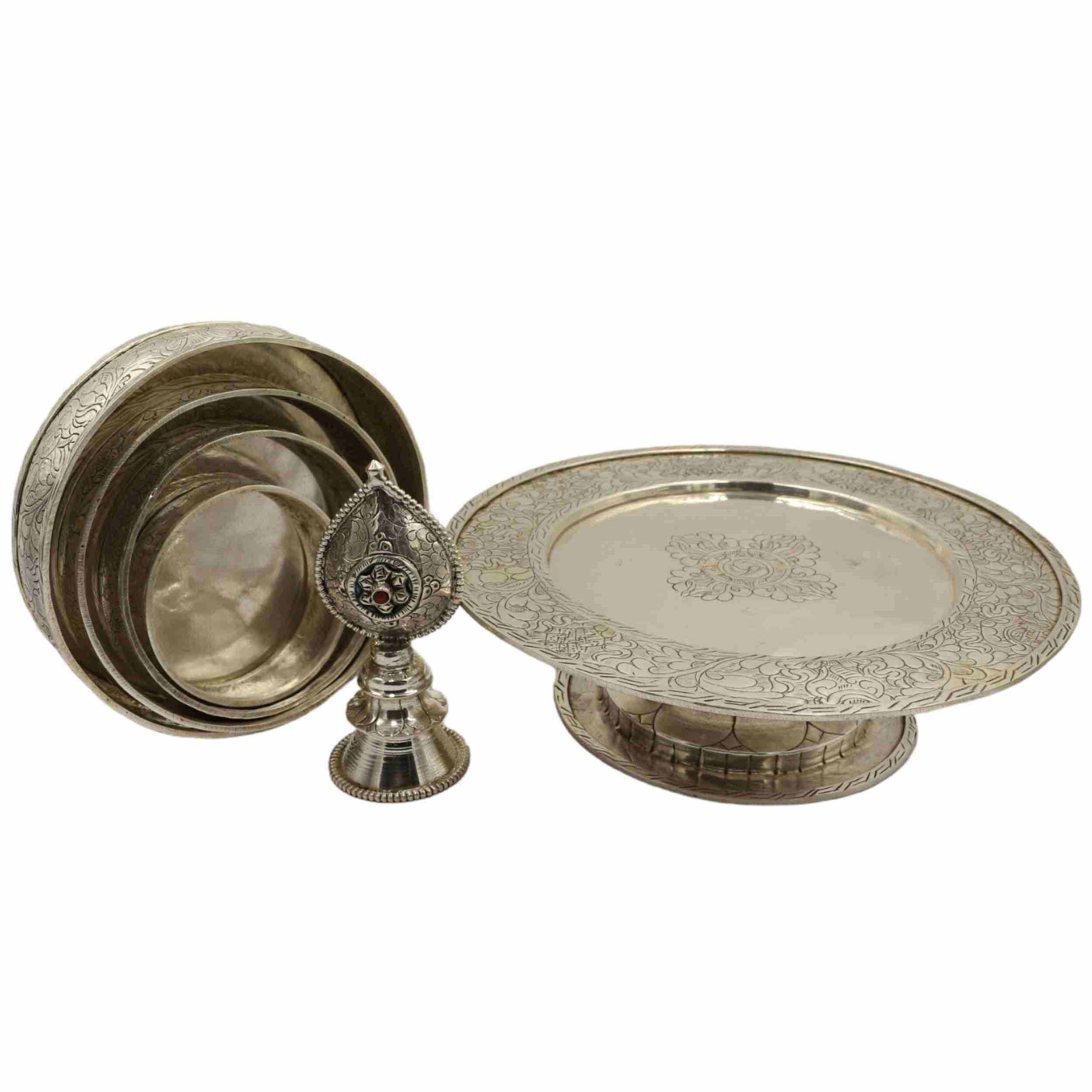 with Stand,
with Stand,  offering,
offering, 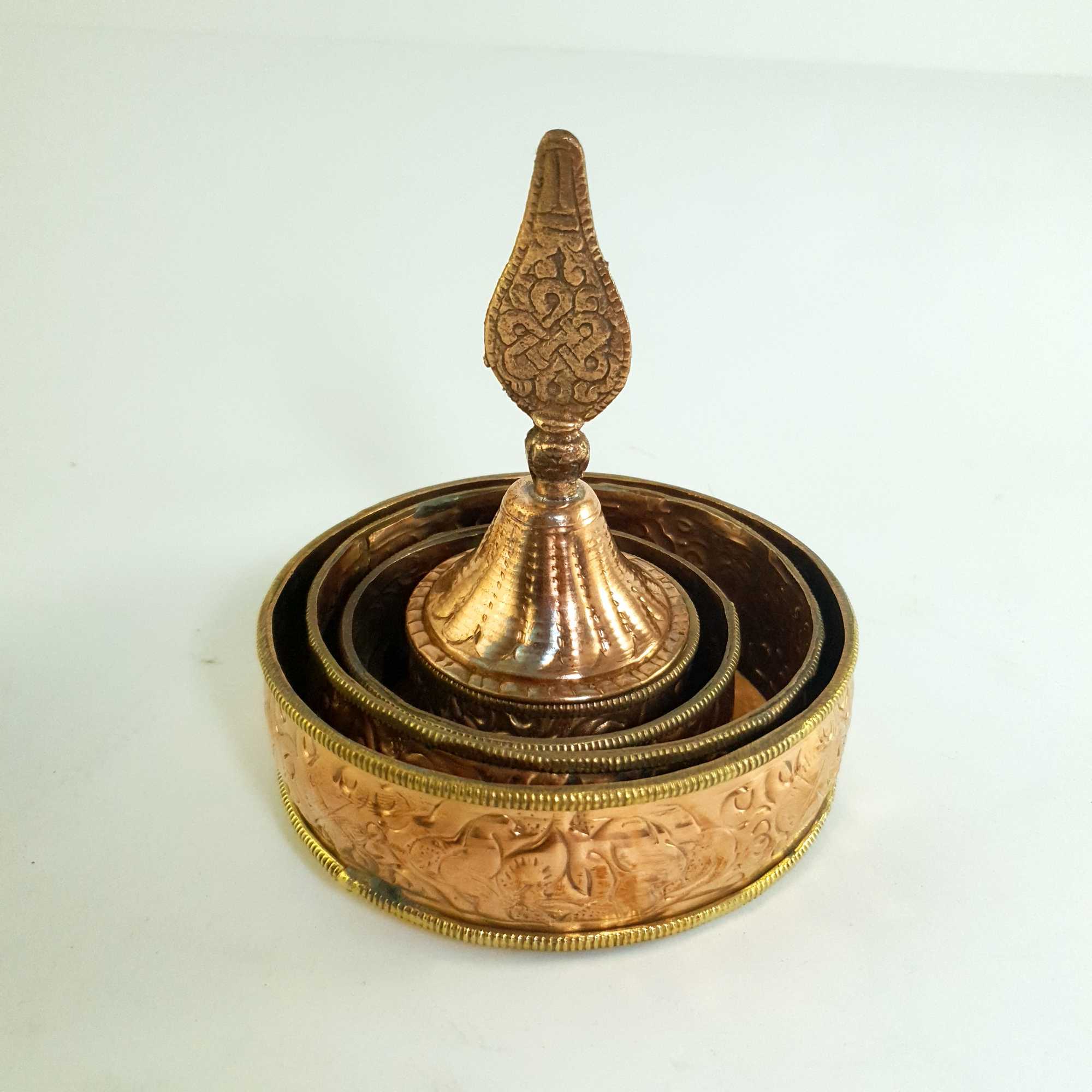 offering,
offering, 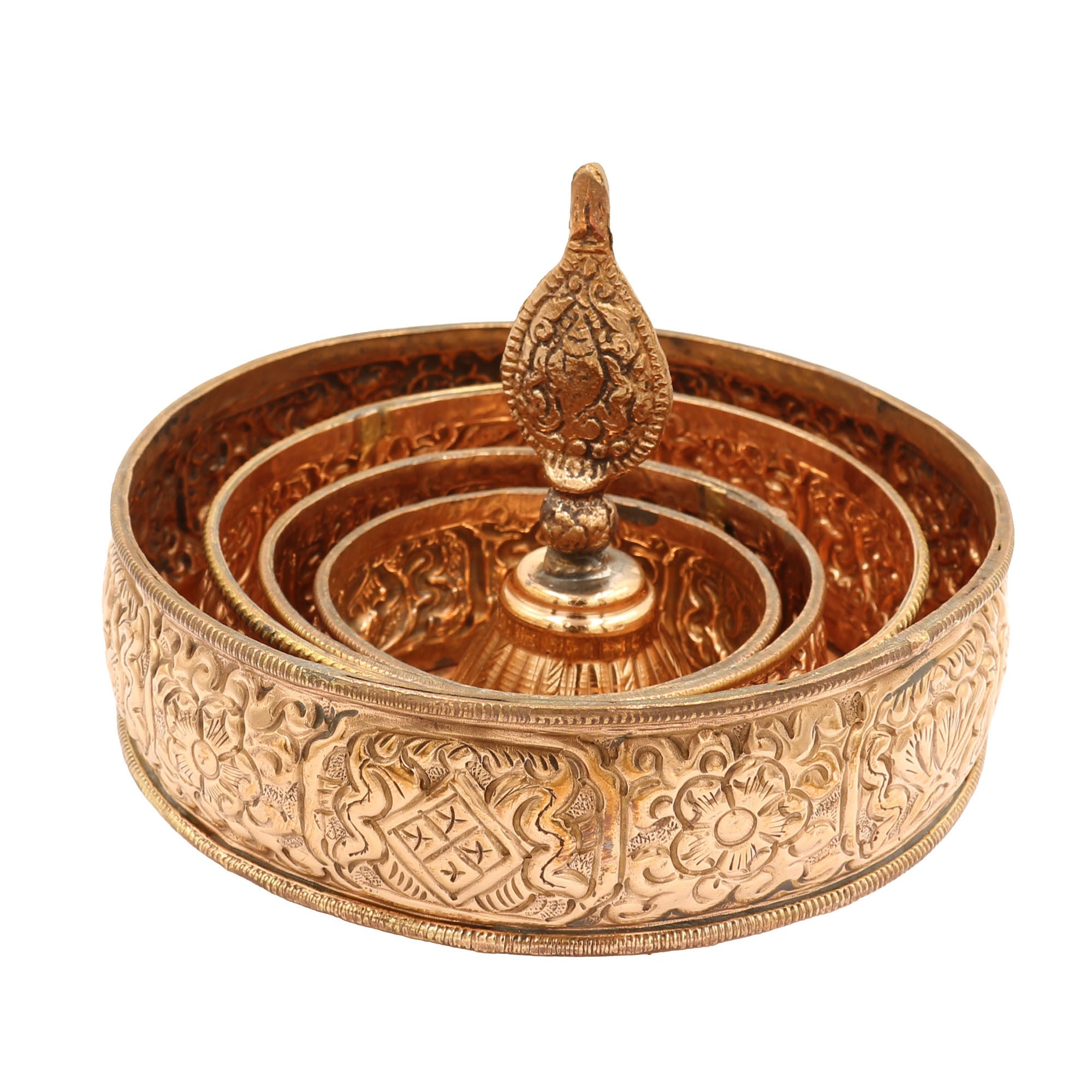 Basic Quality, Medium Large" title="Ratna Mandala, Copper Handmade Tibetan Buddhist Ritual Item,
Basic Quality, Medium Large" title="Ratna Mandala, Copper Handmade Tibetan Buddhist Ritual Item, 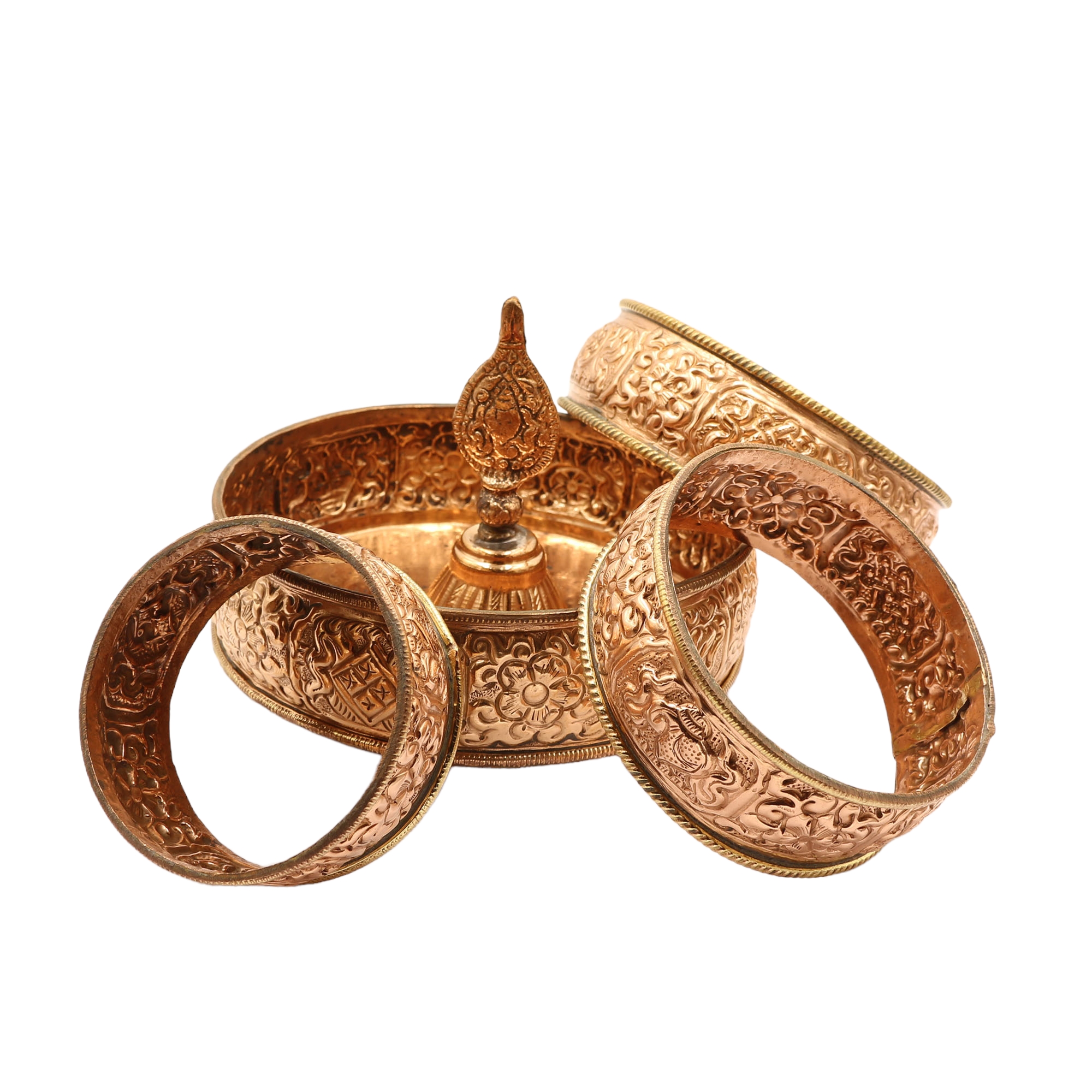 Basic Quality, Medium Large" title="Ratna Mandala, Copper Handmade Tibetan Buddhist Ritual Item,
Basic Quality, Medium Large" title="Ratna Mandala, Copper Handmade Tibetan Buddhist Ritual Item,  Hq, Copper Ratna Mandala
Hq, Copper Ratna Mandala 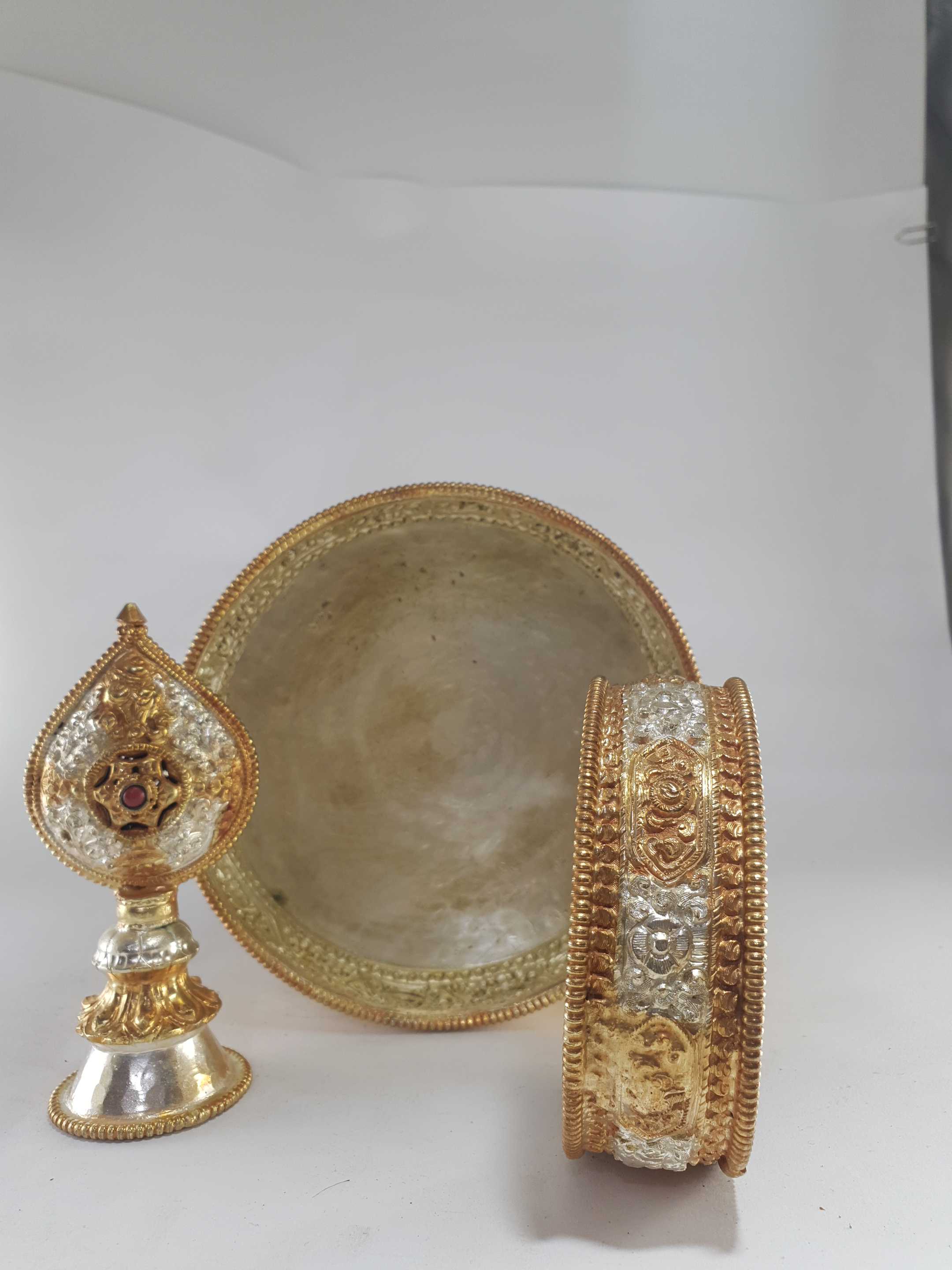 Hq, Copper Ratna Mandala
Hq, Copper Ratna Mandala  offering
offering  offering
offering  Medium, Ratna Mandala, Buddhist Ritual Item,
Medium, Ratna Mandala, Buddhist Ritual Item, 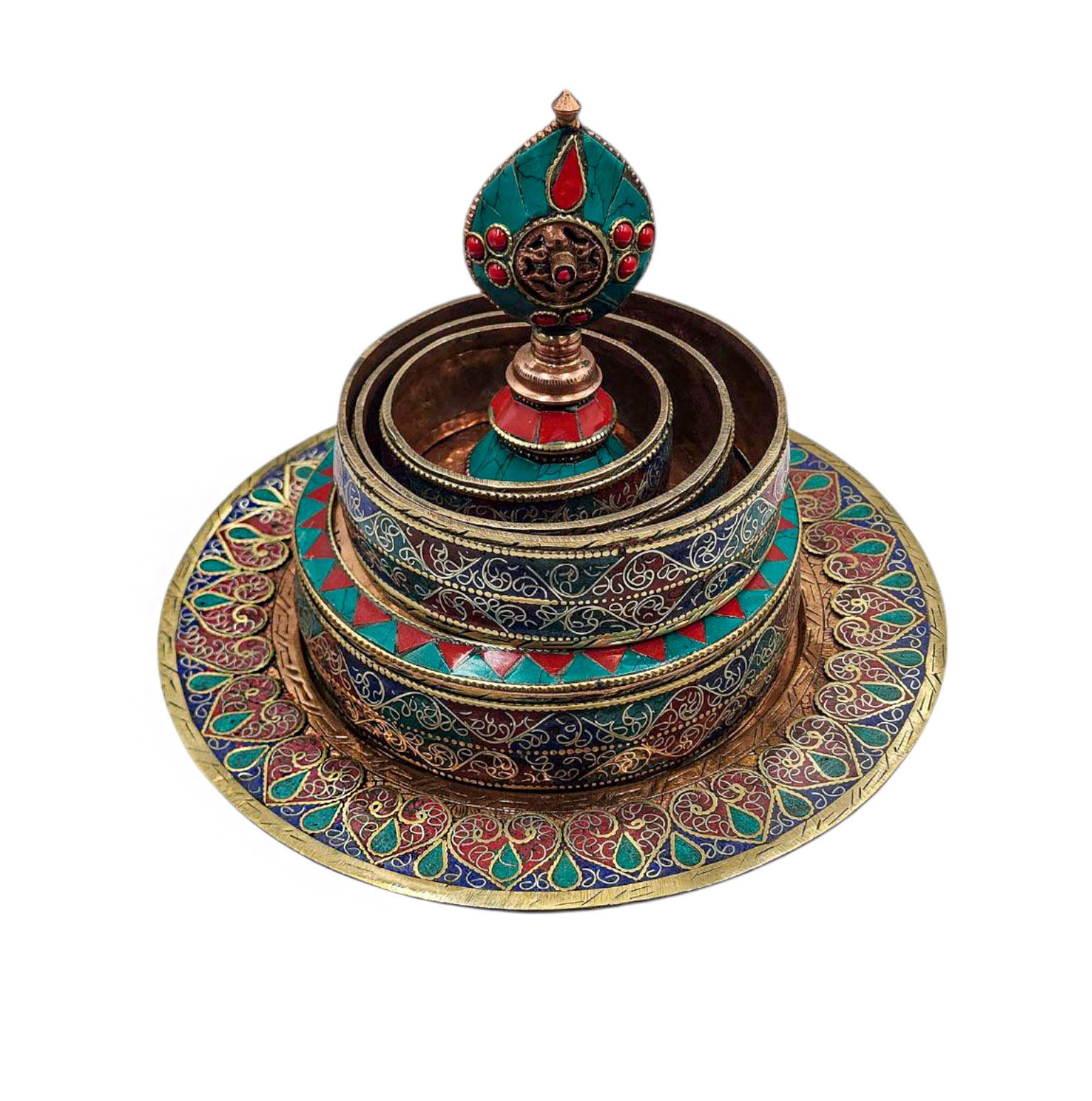 Medium, Ratna Mandala, Buddhist Ritual Item,
Medium, Ratna Mandala, Buddhist Ritual Item,  offering
offering 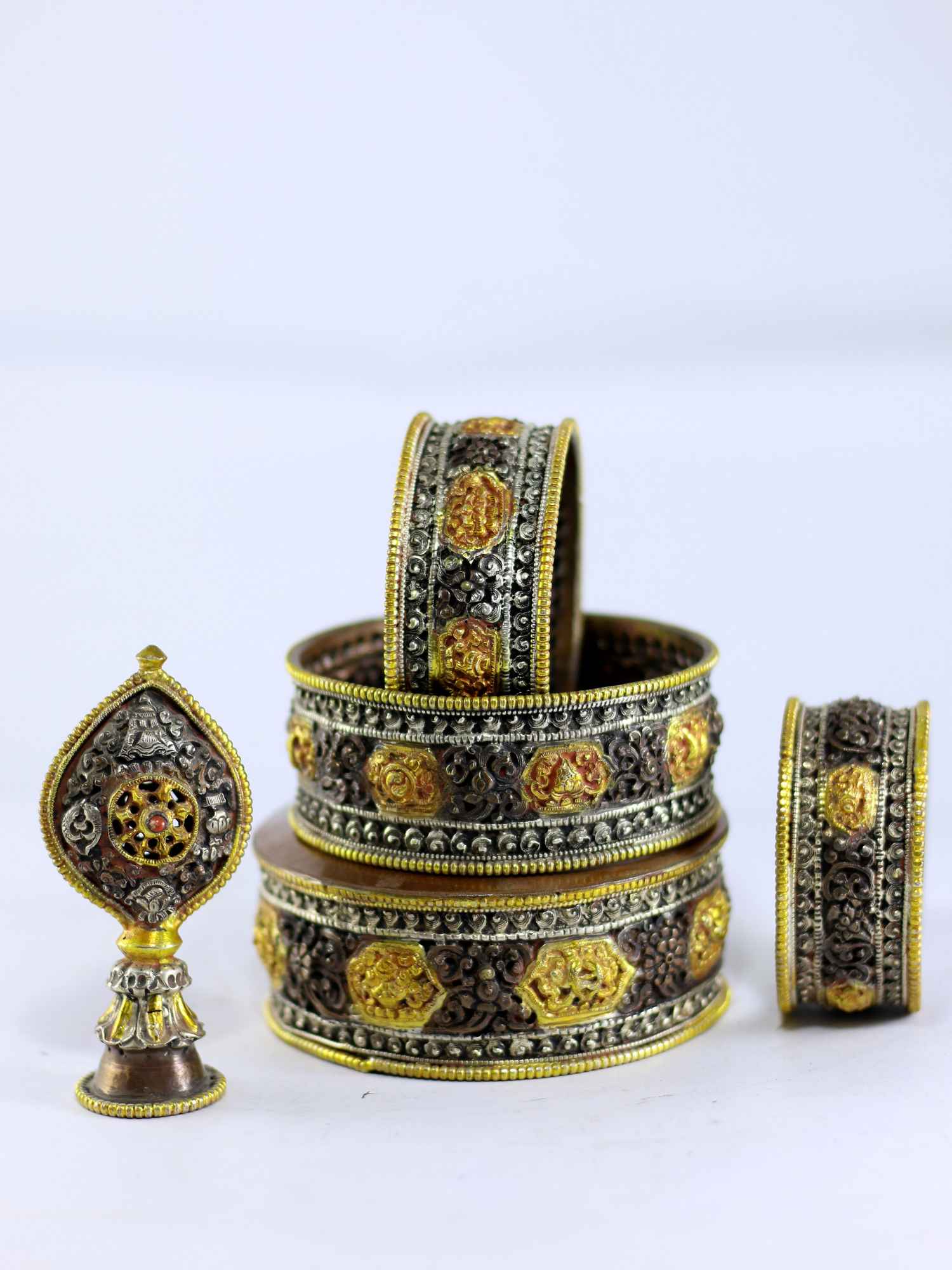 offering
offering  Large Copper Ratna Mandala
Large Copper Ratna Mandala  Large Copper Ratna Mandala
Large Copper Ratna Mandala  offering,
offering, 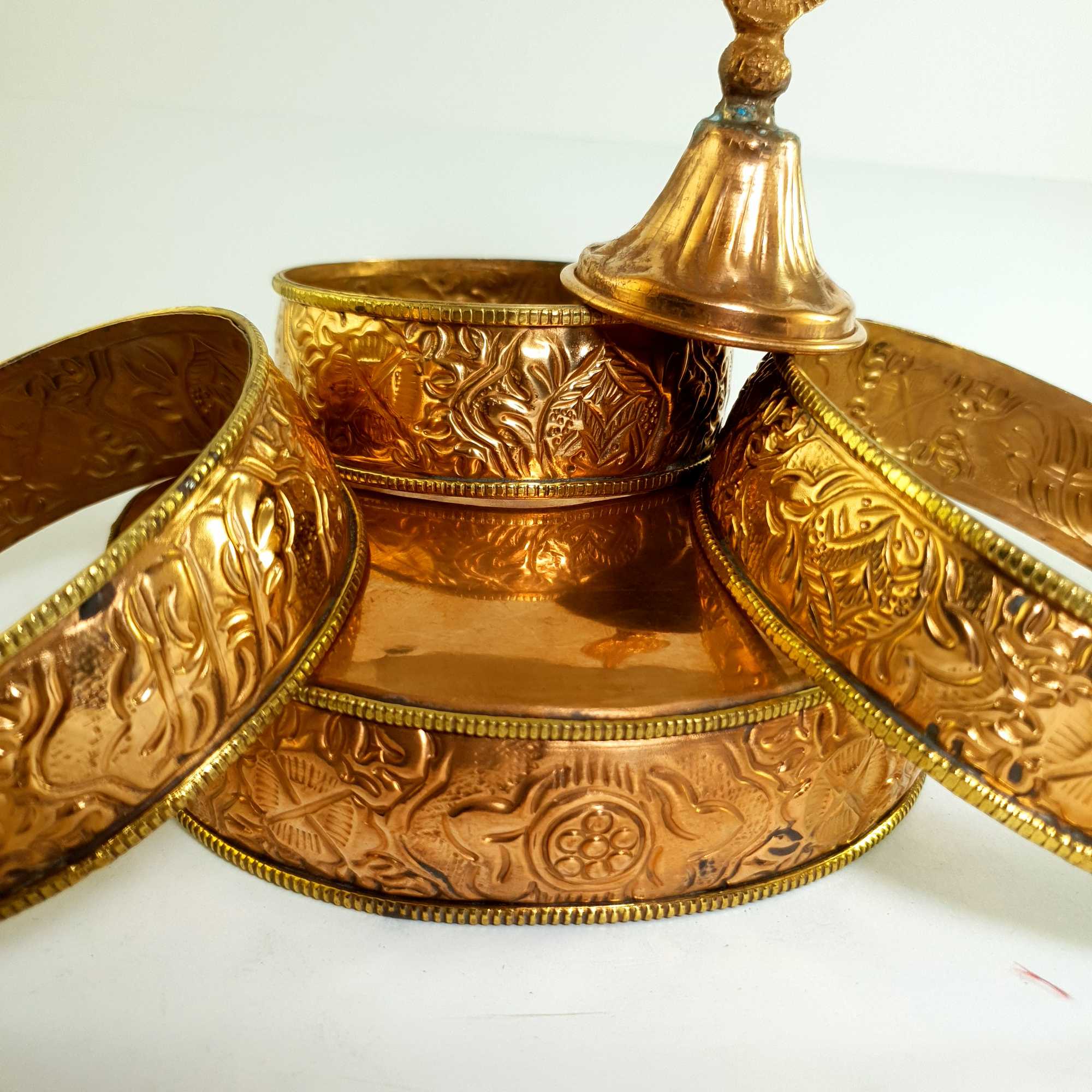 offering,
offering, 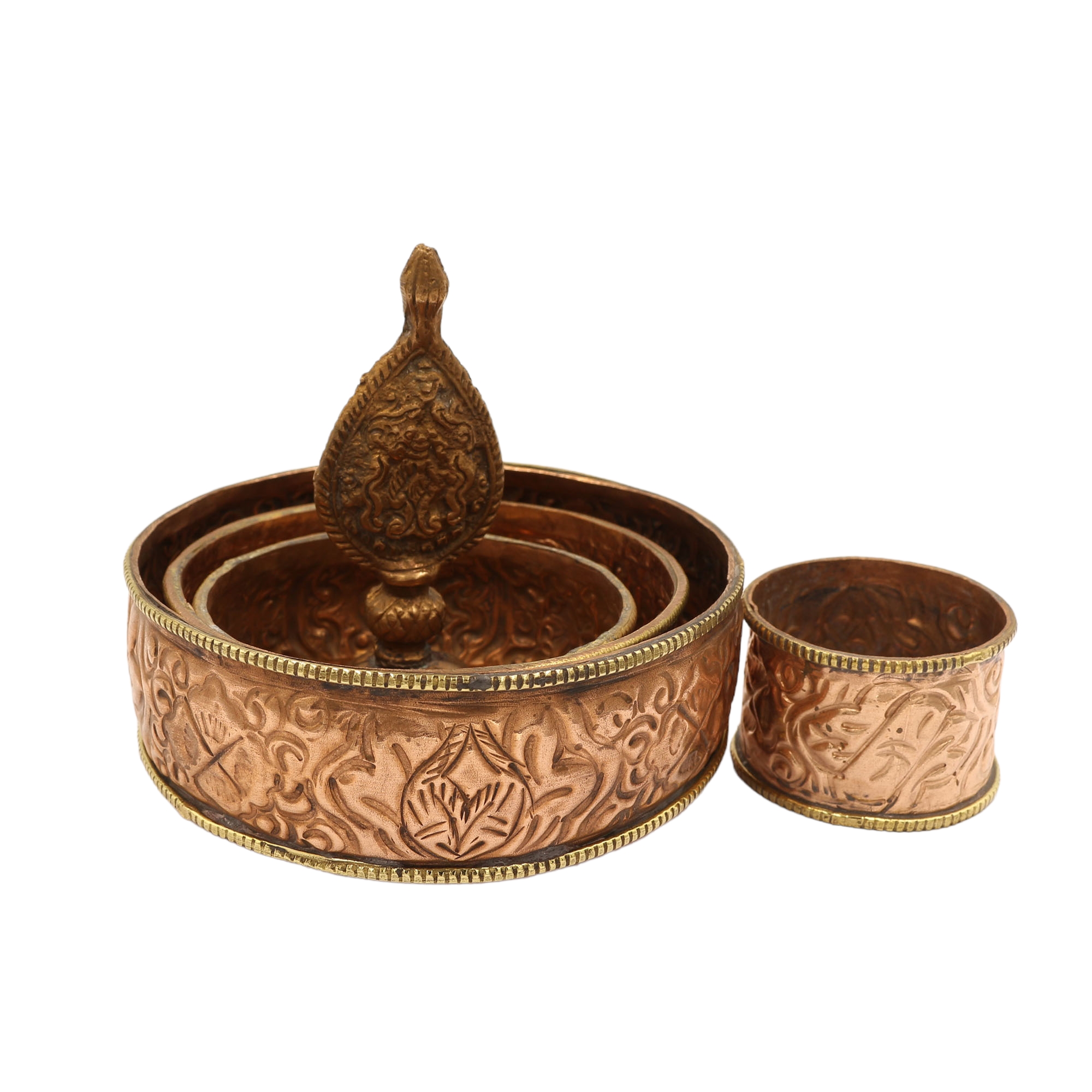 Basic Quality, Small Size" title="Ratna Mandala, Copper Handmade Tibetan Buddhist Ritual Item,
Basic Quality, Small Size" title="Ratna Mandala, Copper Handmade Tibetan Buddhist Ritual Item, 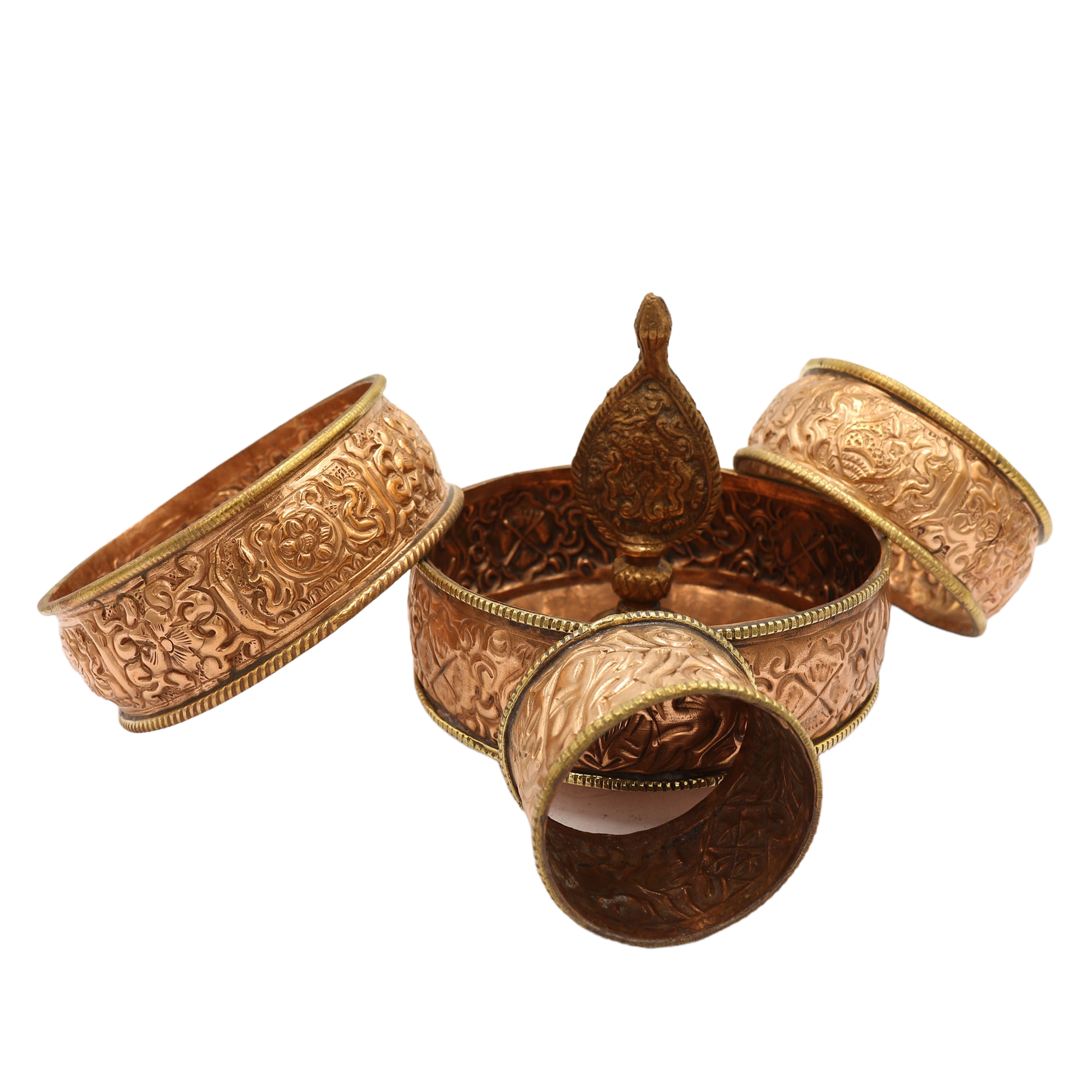 Basic Quality, Small Size" title="Ratna Mandala, Copper Handmade Tibetan Buddhist Ritual Item,
Basic Quality, Small Size" title="Ratna Mandala, Copper Handmade Tibetan Buddhist Ritual Item,